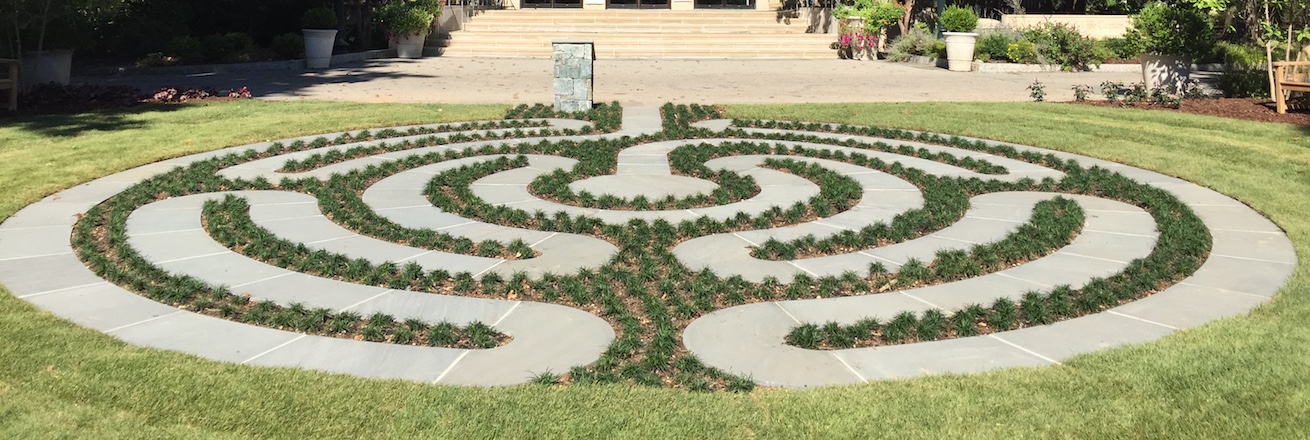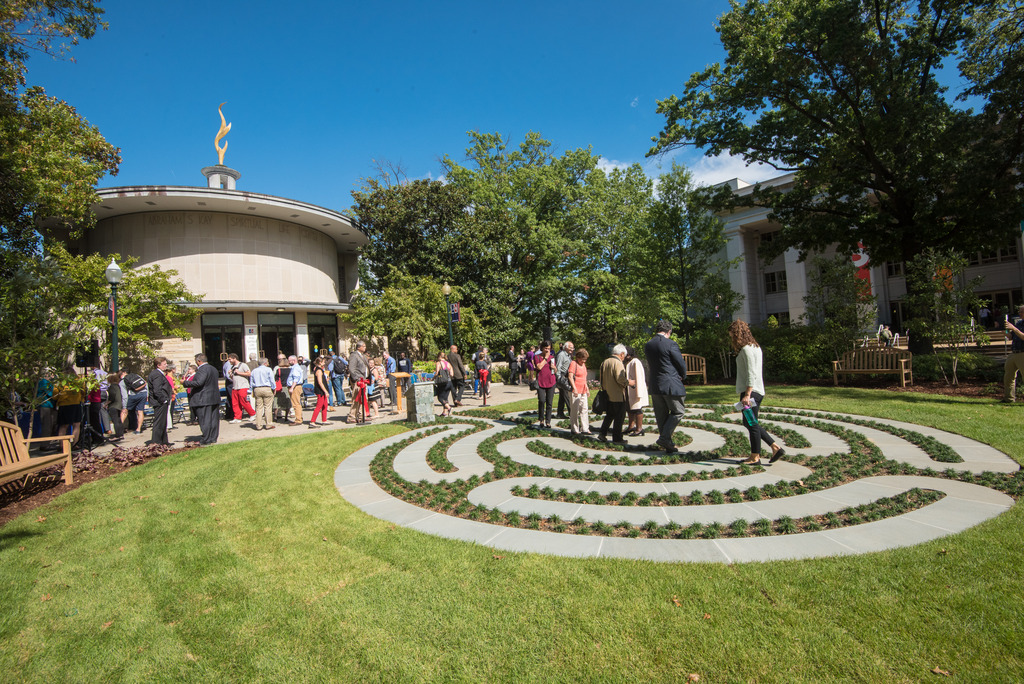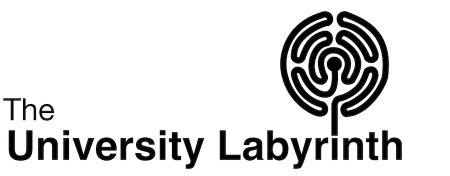You are here: American University Student Affairs Spiritual Life University Labyrinth

A space for reflection, meditation, and rest in the heart of the AU campus

Contact Us
Office Hours:
During the school year:
Monday-Friday 9 AM to 9 PM
Summer: Monday-Friday 9 AM to 5 PM
The University Labyrinth

The University Labyrinth is a space for reflection, meditation, and rest in the heart of the AU campus. Built right in front of the Kay Spiritual Life Center, the University Labyrinth is an outdoor extension of the work of Kay Spiritual Life Center toward spiritual and personal wholeness and well-being.
About the Labyrinth
The University Labyrinth is the result of the vision of Charlotte Jones Carroll (SIS/BA '67), AU's Unitarian Universalist Chaplain, and the advocacy of University Chaplain Emeritus Rev. Joe Eldridge, in whose honor it is dedicated. The labyrinth is an extension of the Kay Spiritual Life Center and aims to be a place of reflection, renewal, and rest for students, faculty, and staff in the midst of a stressful and busy academic year. The labyrinth is located in front of the Kay Spiritual Life Center on the main quad and is a visible statement of the University's commitment to wellness and wholeness.
What is a Labyrinth?
Labyrinths have been known and used for millennia. Their patterns are many and various, possibly arising from nature's spirals. Labyrinths could be found in ancient Crete, in Native American cultures, Tibetan sand paintings, and medieval Christian churches-sharing the theme of transformation. Unlike mazes, labyrinths have only one path in and one path out. There is no anxiety about losing your way.
Interest in labyrinths began to be revived in the mid-1990's, and they can be found in many places around the world, not only in religious sites but in gardens and other public places. This increased interest in labyrinths has accompanied a time of rapid change and an increased interest in spirituality.
Why walk a labyrinth?
Walking a labyrinth can quiet the mind, reduce stress, aid reflection and lead walkers to greater peace and inner knowledge. The winding path slows us down yet allows for a physical path (for the restless among us) toward our own centers or sources of our intuition and inner strength.
An individual might use the labyrinth as a form of walking meditation or contemplative prayer, focusing on a particular issue, or simply being open to thoughts that emerge. How you use it depends what you seek. As Rev. Joe Eldridge notes: "The labyrinth is a walking meditation enabling us to take time to ponder, look inward, revealing to us what is important and makes us whole."
How to walk a labyrinth
There is no right or wrong way to walk. There is no required pace. You start at the only entryway and walk to the center; pause there as long as you wish, then, when ready, retrace your steps. You might enjoy sitting on a nearby bench initially, to breathe deeply and focus on your intentions, then begin.
Many find the walk into the center to be a time of letting go of life's details or worries, and the walk out as a time for integrating insights received. Many find it to be a step "out of the world" and then a step back into it. Each experience is different, each walker unique. Some users like to have music to accompany their walk, and a portable music player with favorite meditative tunes can provide this.

Words of Dedication
Today we gather to dedicate this labyrinth
Giving thanks for those who envisioned it
For those who championed it
For those who gave in order that it might be built
For those who designed it
For those who marked its path, who laid the stone; and
For those who planted its trees, its flowers,
Put down its sod and placed its benches.
We dedicate this labyrinth
in honor of our dear friend and colleague,
Rev. Joe Eldridge
Whose nineteen years of tireless work
for our students, faculty, and staff
served to promote community, wellness, and spiritual well-being.
May this labyrinth be a place of rest,
Of reflection,
Of restoration,
and renewal.
May it serve our community as he has done
Guiding us toward deeper reflection
and deeper purpose and meaning
For ourselves and for the world we hope to serve.
Dedicated September 27, 2016